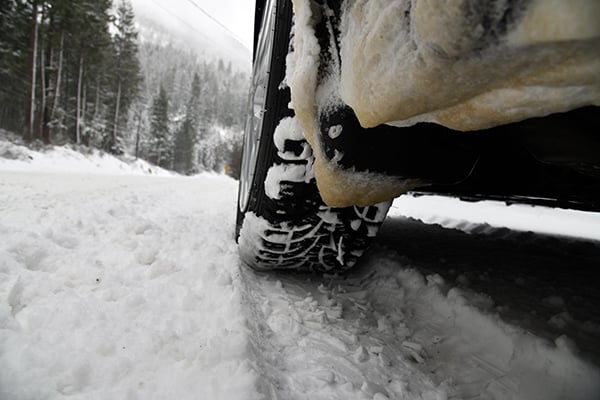Home »

Winter tires still needed as spring arrives
Don’t put away those winter tires just yet in the Kootenays
Even though it’s officially spring, winter tires or chains are still required on designated highways through March 31. For highways located through mountain passes and/or high snowfall areas, the requirements extend until April 30.
“As spring arrives we naturally start to think about how much longer we need to use winter tires. The answer is based on safety, not the season,” said Trace Acres, spokesperson for the Shift into Winter campaign.
Winter tires provide better traction and stopping performance when temperature drop below 7C and on wet, snowy, or icy roads. All-season and summer tires are less effective in colder weather.
“The difference in traction can be the difference between you reaching your destination safely or you and your passengers being in a serious crash,” Acres said.
Vehicles generally take longer to stop when roads are slippery so reducing speed is essential. “We need to be thinking how to get to our destination safely instead of getting there quickly. You can never be sure how your vehicle or other drivers will react in wet or icy conditions.”
Drivers also need to keep tires properly inflated. Air pressure decreases in cold weather, which can affect braking distance, steering and handling. Shift into Winter recommends checking air pressure at least every month.
Look for signs
Highways requiring winter tires or chains are marked with signs and listed online and at DriveBC.ca.
Some B.C. roads don’t require winter tires. In those cases, winter tires are still best for safety when temperatures regularly fall below 7C.
Some other tips to help drivers stay safe at this time of year:
Know before you go. Check DriveBC.ca or your municipality and other local reports for updated road and weather conditions.
Avoid driving when road and weather conditions are poor, if possible.
Prepare yourself by knowing how to drive for the conditions before you get behind the wheel.
Tips for work drivers
Hundreds of thousands of B.C. residents drive as part of their job, either full time, part time or only occasionally. For them, additional tips include:
- Follow your organization’s safe winter driving procedures;
- Report any unsafe conditions to your supervisor;
- Carry chains and know when and how to use them if you drive a commercial vehicle.
Shift into Winter is a joint provincial initiative supported by the Winter Driving Safety Alliance and managed by Road Safety at Work. For more information visit ShiftIntoWinter.ca.
The Winter Driving Safety Alliance is a cross-section of public, private, and non-profit organizations committed to working together to improve safe winter driving behaviours and practices in B.C.
e-KNOW file photo
Road Safety at Work







